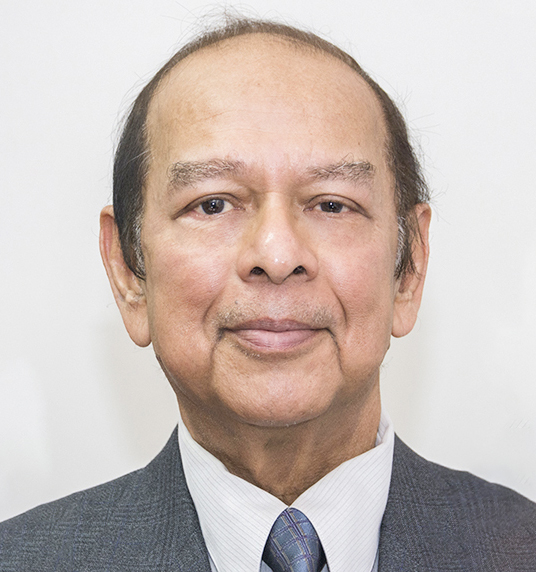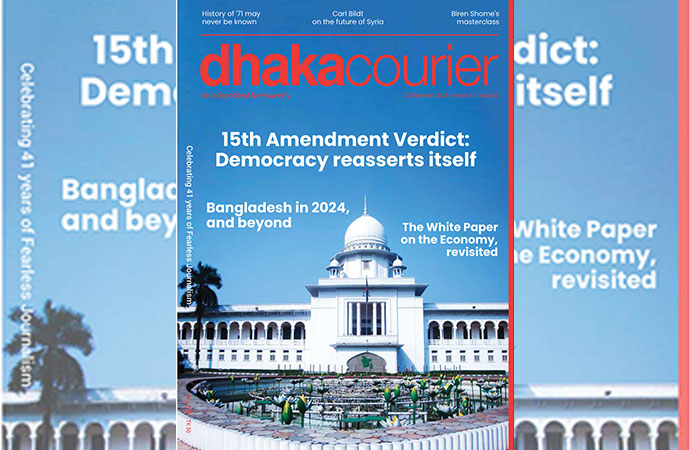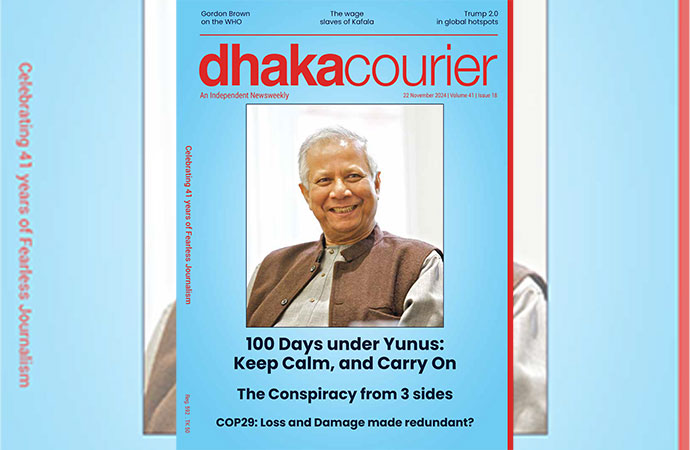Featured 2

Prime Minister Narendra Modi with other world leaders during the RCEP summit meet in Bangkok on Monday. | Photo Credit: ASEAN
To paraphrase a dictum of the Greek philosopher, Heraclitus, no one steps into the same Ganges twice. That stream, like all else in the world, is in constant flux. Note how some years ago, India was viewed as a nation on the 'rise', much like China, as Asians cheered that this century was theirs. The exultation, as far at least India was concerned, was a tad premature, though China continued to progress and prosper. In the early decades since its 1947 independence, what held India together was a combination of cosmopolitan ideas, democratic ideals and a secular frame of mind, represented by early Congress leaders like Jawaharlal Nehru and others of that ilk, who are now somewhat pejoratively described as 'Lutyen's Delhi', named after the English architect who designed the structures of the Indian capital. This category of people, imbued by western enlightenment, ruled the roost over that nation in the early years following the partition of British India.
Eventually leadership in India passed on to those who represented more indigenous urges symbolising classical India. They were inspired by perceptions of pre-British and even pre-Islamic glories, both real and fictional, reflected in the message of Narendra Modi and his Bharatiya Janata Party (BJP), swept into power first in elections 2013 and then again in 2019. This new ruling category was committed to Hindutva, an ideology seeking to establish the political hegemony of Hindus, the faith of India's majority populace, and socially the Hindu way of life. It bred a sense of majoritarianism, supplanting past pluralism, and seemed to be the new glue that kept the essential Indian ethos fastened.
To mainstream this new idea of India, a federal union with strong concentration of power in the centre, was necessary. Devolution of power, whether to Kashmir, Manipur of Nagaland, was deemed unhelpful. The process of such centralization of authority, fuelled by 'popularism' at best, and 'populism' at worst, may yet be one of the greatest challenges that the concept of India confronts. This is also the India today, and these are also the developments that shape India's behaviour pattern at home and abroad.
It was at the Summit of the ASEAN leaders in Bangkok in early November that Prime Minister Modi had to make known the India's decision, which to stay out of the 16 nation Regional Comprehensive Economic Participation (RCEP).It was meant to account for 30 per cent of global GDP and cover half the world's population, making it the world's largest multilateral trade agreement. Mr Modi must have mulled over it long and hard, for a period over six years, literally up to the final hours. Unfortunately for him, and for the BJP, it was not the best of times, both politically, and economically. Externally, relations with Pakistan were at their nadir. The issue responsible for this situation was Kashmir, on which India revoked the Constitutional Article 370 that accorded it special status and fully incorporated the erstwhile State. Pakistan took the matter, and the Kashmir conflict, to the UN. Even if the subject was not on the agenda, it was informally discussed in the Security Council. The result was after generations, this topic, once almost forgotten in the chambers of high diplomacy, resurfaced, at least in the minds of contemporary diplomats and global statesmen. China, Turkey and Malaysia took positions that gave India umbrage. Even President Donald Trump was less forthcoming in support than his predecessors and hinted at neutrality, implied in the offer of 'arbitrating' on this sensitive matter.
Fissiparous tendencies also developed in other sensitive parts of the Indian Union, as in the faraway north-east, in such states as Nagaland and Manipur, who did not share the Hindutva sentiments, apart from other things. Indeed, as negotiations with the separatists in Nagaland stalled, some Manipuri dissident politicians declared 'independence' in London, causing the Indian rulers a modicum of embarrassment. BJP's electoral underperformance in Maharashtra and Haryana also indicated that the party, and Mr Modi, may no longer be as invincible as earlier supposed.
On the economic front, there was also little to bring cheer. The GDP in April-June quarter of the current year grew at just 5 per cent, the lowest in six years. The growth in manufacturing output was also at the slowest pace in two years. The manufacturers purchasing manager's index, based on a survey of around 400 producers, fell from 51.4 in September to 50.6 in October, recording a two year low. Signs of prolonged agrarian distress and stagnant rural incomes were evident in the slump in household consumption to a seven year low in the quarter of July to September.
Earlier on the BJP government's demonetization policy that suddenly led to the withdrawal of 85 per cent of the currency from the market to no perceptible benefits, and the rolling out of the complex GST scheme, with its complicated implementation procedure, seemed to bring no joy to the teeming masses. Even trade data were extremely uninspiring. With the intended RCEP partners they showed negative results. In the Financial Year 2019 India recorded a trade deficit of US $ 105 billion. The decision to join at the RCEP at this time, it was felt, would take India deeper and deeper into the abyss of trade-deficit.
The reasons, then, that fed into India's decision not to join the RCEP could be summarised as follows. First, was the fear of China, leading the RCEP initiative. The concern was that China would circumvent the Rules of Origin clause to dump its inexpensive manufactures in the Indian market. Indian negotiators also saw an absence of safeguards to prevent import surges. Indian strength of course lay in services, but on that score the RCEP appeared to provide no positive market-access. The second was the steel industry. The price of Indian domestically produced steel is 60 per cent more than the average global costs. China has overcapacity in this regard. The result was grave concern in the Indian steel production circles. The third was the perceived inability of the Indian dairy industry to contend with more efficiently produced and cheaper products from Australia and New Zealand. This was evidenced in the joyous reaction of the 'Amul' brand of Indian cheesemakers when the Indian decision became public. Fourth was textile, a key sector for employment which would also be under a huge pressure. Already India is bested in this respect by neighbouring Bangladesh, a much smaller country, which alone is now responsible for over 35 per cent of the global trade. In the RCEP region this sector would be vulnerable to manufactures from China, the Philippines, and Vietnam. Fifth would be the push -back from many quarters in the domestic scene. They included, to be sure the Opposition Indian National Congress as well as the lobbyists representing the affected sectors, but also BJP allies from the extreme right as the 'Swadeshi Jagran Manch'. All these factors led Mr Modi to make the impassioned plea that his 'conscience' (for it, read 'fear of immediate political price to pay') would not allow him to sign on.
The message was, clearly, that India was not yet ready for it. A good question would be, why not? The Economic Reforms of 1991 has seen a change in India's fortunes for the better. The opening-up to the world beyond at that time, signalled the rise of a mature economy, a new bright star across the global economic, and political firmament. Then also, one would recall, there were protests from quarters similar to what one sees now , such as the 'Bombay Club' ,the so-called group of industries that profited from protectionism , as also from the right and left of the political spectrum. The Congress party, then on board, alas, now appears not to practice what it had then preached. So, the puzzle remains, as to how is it that through decades, Indian manufacturing remained globally uncompetitive? How can it be the 'economic powerhouse' it wishes to be seen as, if its industries remain inefficient? How would the world perceive these Indian weaknesses? Would it not have ramifications for the perceptions of India by other global actors, for weak econies cannot make for strong powers? So, was the resultant 'Swadeshonomics' ('nationalist economics') the best available option?
Perhaps not. There are those who feel India should have braved the challenges of competition, the only way to make its manufacturing sectors efficient. They felt that it was ethically wrong to make the Indian consumer pay a higher price to protect their inefficient Captains of Industry, particularly when the rich-poor divide in that country is ever widening?
But the government's decision was obviously taken after a careful consideration of the pros and cons. The preference was for the avoidance of immediate back-lash as opposed to success in the long run, when it would no longer matter to the current powers that be. A short-sighted policy perhaps, but one without an apparent immediate option. Mr Modi's fellow leaders at the Bangkok Summit, while deciding to launch RCEP in February 2020 held out to him the promise to accept Indian entry at a later date, when it was ready. However, all for it to happen, all sides might have to wait till the cows come home. And as well know, they never do, on their own!
Dr Iftekhar Ahmed Chowdhury is Principal Research Fellow at ISAS, National University of Singapore, former Foreign Advisor and President of Cosmos Foundation Bangladesh

























Leave a Comment
Recent Posts
Curtain rises on 6th National ...
The month-long '6th National Sculpture Exhibition 2024', organ ...
Thailand's sea nomads strive t ...
When Hook was a child, he started his days by jumping off the boat tha ...
Liliums grown in Bagerhat show surprising promise fo ..
Bangladesh’s three divisions brace for rain
Prioritise reconstruction of Gaza, West Bank, Lebano ..
In support of the vision set forth by the CA